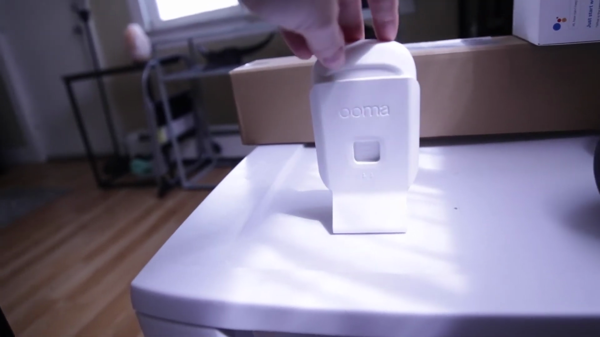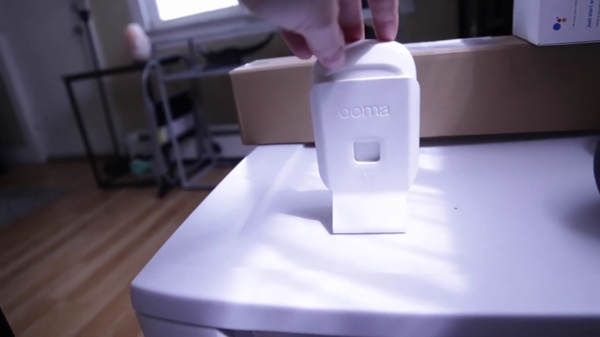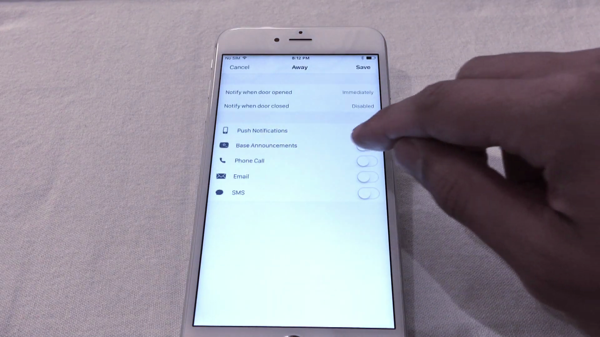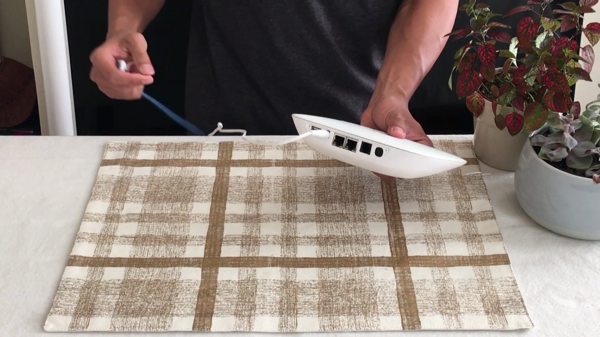Note: As an Amazon Associate I earn from qualifying purchases.
My review of the Ooma Motion Sensor: great smart security (2024)
Introduction
For a while now I’ve been searching for a security system that suits my smart home without complications, and the Ooma Motion Sensor quite fits the bill. It offers seamless integration with my existing setup and requires minimal upkeep, which are key factors for me. Building a secure (and smart) home without added clutter or intricate systems is quite important to me - more on this below.
Specifications
| Property | Value | Property | Value |
|---|---|---|---|
| Brand | Ooma | Color | White |
| Power Source | Battery Powered | Item Weight | 8.8 Ounces |
| Maximum Range | 12 Meters |
Photos
Click on photos to enlarge them:
Prices
Check prices of the Ooma Motion Sensor, White - Smart Home Security on:
Initial Setup and App

Setting up the Ooma Motion Sensor was a combination of ease and a slight challenge as I embarked on my journey to create a more secure home with my DIY home security system. I began by downloading the free Ooma Smart Security mobile app and followed its instructions for pairing with my Ooma Telo base station. The clear guidance from the app made the DIY home security process feel intuitive, allowing me to confidently continue setting up additional components of my new system.
Here are the insights I gained from my setup process:
Wireless and Portable: The sensor’s design offers flexibility in placement, and I wasted no time situating it in key spots around my home.
Customization: The app provides several customization options that are straightforward, ensuring that I could tailor the settings to my home’s unique needs.
Using the Mode Settings feature in this system, changing modes between ‘Off’, ‘Home’, and ‘Away’ is straightforward. The app provides five distinct PIN codes for enhanced security when making mode adjustments.
However, perseverance was necessary when adjusting settings for various modes like ‘Home’, ‘Away’, ‘Night’, and ‘Vacation’. These changes weren’t effortless; I needed to thoroughly explore the features to determine their optimal use. This small hassle proved worthwhile.
The ability to add numerous sensors to the system for full home coverage was a definite plus, though I grappled with ensuring each sensor’s settings were coherent and didn’t overlap in a way that caused confusion or unnecessary notifications.
During my experience with the alerts, I found the push notifications to be timely and essential for uninterrupted monitoring. However, during rapid occurrences, the system’s re-notification period might delay subsequent alerts, which could interrupt my continuous desire for uninterrupted monitoring. Although this didn’t often happen, it caused concern and required my attention due to the importance of uninterrupted monitoring.
Integrating the sensor into my smart home was effortless. The real-time updates and notifications assured me of immediate knowledge about any unusual motion detected in my house. I maximized the benefits with the complimentary service plan, which featured limitless sensor usage and live sensor status monitoring. This added substantial value to the Ooma ecosystem.
In my experience, the Ooma Motion Sensor functions as a reliable security solution within my user-friendly smart home system, embracing the principles of smart home minimalism. Although there are minor complexities to learn and adjustments needed, such as sensitivity settings and re-notification preferences, the benefits of this security solution in maintaining a streamlined and efficient smart home far outweigh these drawbacks, resulting in a mostly positive experience for me.
Real-World Performance

In my pursuit of a clever, uncluttered home security system, the Ooma Motion Sensor has been essential. As part of the larger Ooma Smart Security system, it adds convenience along with some complications to my routine.
Here’s a rundown of my real-world experience with the Ooma Motion Sensor:
Easy to Place, the wireless and portable design allows for effortless placement anywhere at home, eliminating power concerns and the need for visible cords.
Customizable Alerts: It was straightforward to set up notifications in the app to alert me of any motion detected, regardless of the hour.
I receive Instant Notifications on my phone whenever motion is detected.
Versatile Add-ons: I appreciate the possibility of adding more sensors for complete coverage.
Yet, for all its advantages, the Ooma Motion Sensor comes with some disadvantages:
Sensitivity Adjustments: At times, the sensor seemed a little too sensitive, picking up minor movements that weren’t of concern. This required frequent adjustments to avoid unnecessary alerts.
Learning Curve: The app interface took some getting used to. It’s not the most intuitive, and toggling between modes can be a bit fiddly.
Geofencing Lags: The feature sometimes experiences delays, resulting in unwanted alerts due to my entrance.
The system’s performance and ease of use are commendable, as I’ve automated many tasks with its convenient features. However, I’ve encountered some challenges, particularly with the geofencing function. Designed to automate the arming and disarming process, this feature generally exhibits acceptable responsiveness in most situations. Nevertheless, in certain scenarios, such as when I enter my house carrying groceries, its speed could use improvement, leading to motion alerts despite having already entered the house due to the system’s lack of immediate responsiveness during mode transitions.
Moreover, while some users might not encounter problems with pets affecting the sensor, those with pets should consider the placement of the sensor or adjust its sensitivity to prevent false alarms. This is important for managing battery life and ensuring accurate readings.
The Ooma Motion Sensor is an excellent addition to my streamlined security solution, significantly enhancing its capabilities. Although it may encounter some hiccups, such as a less-than-ideal app interface and occasional geofencing delays, its strengths and adaptability are noteworthy. Connecting it to my Ooma Telo has led to a seamless experience that’s hard to ignore for anyone seeking an uncomplicated method to augment their home security.
Battery Life and Maintenance

The Ooma home motion sensor is a solid investment for those seeking easy DIY security. However, it’s crucial to consider its battery life and maintenance requirements for minimal hassle. Based on my observations:
- In high-traffic areas, motion sensor batteries can last up to 20 months, ensuring sufficient battery longevity for extended periods. Conversely, in low-traffic zones, battery replacements may only last three weeks due to severe battery drain issues, highlighting the importance of optimizing conditions for improved battery longevity. Positioning sensors away from direct sunlight and reflective surfaces can help prevent unnecessary activations and significantly extend battery longevity.
The CR123A lithium batteries are not particularly cheap, so frequent replacements could be a drawback. However, following some troubleshooting with positioning and ensuring that the sensors aren’t triggered by minor movements, like leaves blowing in the breeze, has helped in maintaining a more consistent battery life.
I also want to stress the importance of quality batteries. Avoiding bargain brands seems to keep sensors running longer. For areas within reach of a power source, I’ve actually moved over to using a 3volt DC power supply plugged directly into the motion sensor. It’s been a game-changer, especially when connected to a UPS for continuous power without frequent battery changes.
What also helps is the Ooma portal and community. Although my battery issues haven’t been fully addressed through official channels, user experiences and tips offer valuable information for troubleshooting.
My takeaway is that the motion sensor is a practical and reliable solution, despite requiring some maintenance. Its practicality outweighs potential concerns such as battery issues. The convenience it brings in automating various functions makes it a worthwhile investment.
In terms of maintenance, these devices require minimal effort. A regular check of their positions for optimal sensor detection and occasional battery replacement are sufficient.
In my quest for a minimalist security solution, I found this sensor to be an excellent fit. Its simple design and low-maintenance requirements align perfectly with my preference for uncomplicated systems. Although there is a potential battery issue, the practicality of this minimalist device makes it a worthy choice for basic home monitoring.
Cost-Effectiveness and Value

In evaluating the cost-effectiveness of the Ooma home motion sensor, it’s important to consider its functionality against ongoing expenses. As someone who enjoys smart home technology but values minimalism, I look for devices that deliver on their promises without adding unnecessary clutter or requiring frequent investment. Here’s my assessment of the Ooma sensor:
This no-frills sensor, offering fundamental motion detection, is an ideal choice for a straightforward home security setup focusing on no-frills security. No-frills security seeks to provide essential protection without unnecessary features or complexities. With this sensor, users can effectively monitor their space for motion while keeping costs and complexity to a minimum.
Wireless Design: This feature enables me to place the device anywhere in my home freely. I can adjust its position without incurring extra costs due to its wireless connection.
Expandability: Adding more sensors or integrating additional security features like door/window sensors is a straightforward process.
On the downside, some drawbacks are worth considering:
Subscription for advanced features: While the free plan provides decent functionality, accessing the full suite of features like Remote 911 and automatic mode switching requires a paid subscription. For those who prefer to avoid recurring fees, this could be a sticking point.
App usability: The mobile app, while free, could be more intuitive. Mode changes can be a bit fiddly, and geofencing doesn’t always respond promptly, sometimes leading to unnecessary alerts.
That said, from a minimalist standpoint, the Ooma sensor is straightforward. It doesn’t necessitate a professional installation or a complicated setup, which I prefer. The integration of the system with the Ooma Telo base station is smooth, and real-time updates are beneficial for keeping informed about home events.
On the other hand, if you’re an Ooma phone service user, this sensor is a worthwhile addition. It enhances the functionality of a service you’re already paying for without necessitating a separate system.
In conclusion, the Ooma home motion sensor is a good fit for my smart home and simple lifestyle. It offers basic security without adding complexity or significant ongoing costs. Its respect for my desire for an uncluttered living space while providing peace of mind is a major advantage. If you’re okay with its less-than-ideal app and potential need for a subscription for advanced features, this sensor makes a solid investment for essential home security.



